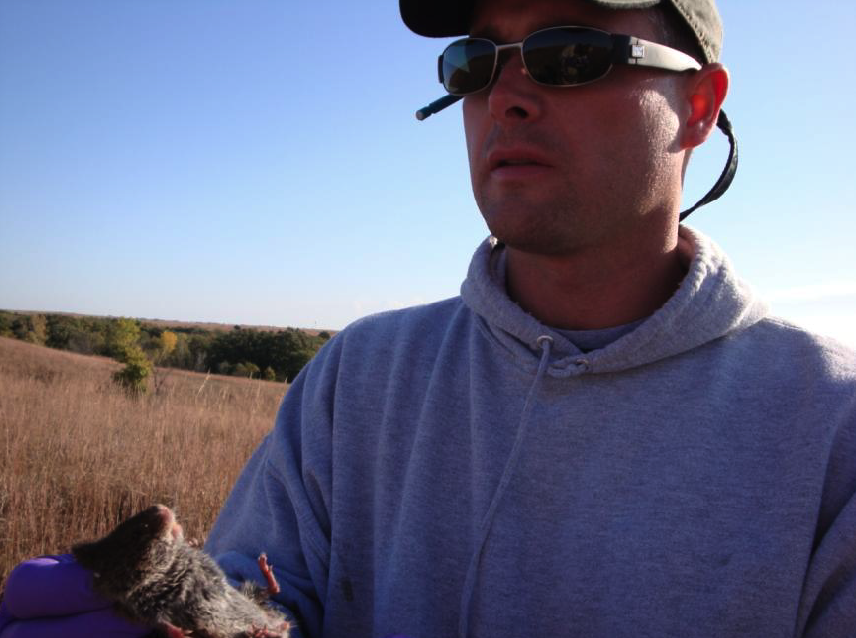Small Mammal Populations in Prairie Ecosystems: Scale Dependent Responses to Disturbance
 Investigators:
Investigators:
Derek A. Moon, M.S. student
Dr. Jack F. Cully, Jr.
Project Supervisor:
Dr. Jack F. Cully, Jr.
Location:
Fort Riley Military Installation Funding
Department of Defense, Fort Riley
Objective:
Assess small mammal habitat selection in relation to disturbance and vegetation in tallgrass prairie at Fort Riley.
Results:
Disturbance is defined as any discrete event that disrupts ecosystem, community, or population structure and changes resources, substrate availability, or the physical environment. Habitat use by an organism is based on its perception of where to maximize its own fitness, and can be altered in response to disturbance-induced changes in resources, substrate, or physical features modified by disturbance. Disturbance-induced changes to vegetation structure reshape a small mammal's surrounding physical environment and/or resources, and may influence its utilization of an area. Effective wildlife and resource management is dependent on a thorough understanding of how individual species and communities utilize their surroundings and how disturbance affects a species' response to changes in its surroundings. We investigated seasonal habitat associations of three small mammal species and for overall species diversity across a gradient of military combat-vehicle disturbance intensities at the Fort Riley Military Reservation, Kansas. Deer mouse (Peromyscus maniculatus) abundance did not vary across a categorical gradient of disturbance created by military-combat vehicles, regardless of season. Western harvest mouse (Reithrodontomys megalotis) abundance was associated with more highly disturbed areas irrespective of season. Prairie vole (Microtus ochrogaster) abundance was associated with habitat that was less disturbed in the spring but more highly disturbed in the fall. Shannon diversity of the small mammal community was higher in the more highly disturbed areas regardless of season. This research shows that small mammals respond to disturbances created by military training with combat vehicles in a species-specific manner, and indicates that there may be differences in the effects of military training versus natural or agricultural disturbances on the abundance and diversity of small mammals. This is an important consideration given that the Department of Defense manages more than 12 million ha of land in the United States, and is charged under the Sikes Act with conserving natural resources on these lands, including biological diversity. Thus, the findings of other ecological research on the effects of disturbance on small mammals may not be directly applicable to the types of disturbances that occur on military lands, which underscores the need for further research on the specific effects of military-training activities on species' responses.
Products since 2010:
Moon, D. 2011. Small mammals in disturbed tallgrass prairie landscapes. Thesis, Kansas State University
Moon, D., and J. F. Cully. 2010. Small mammals in prairie ecosystems: scale dependent responses to disturbance. Annual meeting of the American Society of Mammalogists, Laramie, Wyoming.